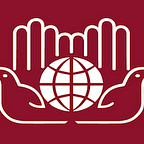Design for Humanity Summit II: Understanding Migration and Refugee Situations in the Age of Big Data
On Friday, June 21, the IIHA held its second annual Design for Humanity Summit, an event where scholars, humanitarians, and students alike gathered to engage in discourses about humanitarian design. This year, much of the Summit examined how we, as humanitarians, can focus on spreading the narratives of refugees and IDPs around the world from the data that we have gathered about them.
Following the morning and afternoon session Design Dialogues, attendees of the Summit split up to attend various workshops on topics ranging from urban planning to working with local populations and social justice. I participated in a lecture entitled “Understanding Migration and Refugee Situations in the Age of Big Data,” which examined what seemed to be an overarching theme of the Summit, that is, technology and its use in creating narratives. Jeremy Boy, Data Visualization and Design Specialist for the UN Global Pulse, Executive Office of the Secretary General at the UN, led this workshop. Boy’s workshop split into three parts, each looking at a different way that data is used to understand refugees and their migration paths.
The first part of the workshop, entitled “Along the Way,” focused on technology that is used to track conversations concerning refugees and their migration path. Boy demoed a program in which he was able to draw a route across the Mediterranean that mimicked a way that refugees might have taken into Europe. From there, he was able to use critical terms and social media platforms such as Twitter to weed out the conversations about refugee movement at a specific time and place along the map.
The second part of the workshop, “Rescue Signatures in the Mediterranean,” looked at the paths that refugees take when crossing the Mediterranean and how technology is used to decipher them. Often as Boy pointed out, smugglers will give refugees just enough fuel to make it to international waters and a type of phone to send out a distress signal. The journey for those that cross the Mediterranean is dangerous, and all too often, these boats are over capacity. As a result, the amount of missing or deceased refugees has dramatically increased over the past three years; every two hours someone goes missing or dies at sea.
As there has been an insufficient policy response to this problem, NGOs have taken it upon themselves to dispatch rescue ships. Boy explained that his team takes two approaches: looking at the distress signals of the boats carrying refugees as well as the movement of NGO ships which broadcast ASI signals to show where they all at all times. Looking at movements of seven ships they knew belonged to NGO’s and trying to corroborate that information with information from social media, Boy explained that his team was able to get an idea of what these rescue missions look like and how long they take. Using this information, Boy’s team can use an algorithm to see the pattern of trips that ships make and what a rescue effort looks like on a broader scale. Ultimately, these points of data are useful in determining different routes that refugee boats take and the economic impact of these rescue missions.
Finally, in the third part of the workshop, “Towards Understanding Refugee Integration in Turkey and Using Call Detail Records,” Boy demonstrated how his team can track the phone records of refugee communities to determine how integrated these communities are to Turkish communities. When a phone makes a call, it pings the nearest cell tower to them, then the nearest cell tower to the person that they are calling, then finally the phone of the recipient of the call. In urban areas especially, this can give a very accurate idea of where the person is who is making the call. Boy explains that calls made at night are more often than not made from the home, so by tracking this call data during night time hours, it can be determined where refugee communities have settled throughout the country and how integrated with citizen communities they are. Boy emphasized that this information is never used on an individual basis, merely a community one, and was used to see if calling a specific region of the country an excessive amount of times was a predictor for whether or not refugees would move to that area.
With all this new technology comes the question of ethics. If this technology, especially the phone data programs, were to fall into the wrong hands, could it be used to track individuals and target them and their families? This is a pertinent question to ask along with the inquiry of if refugees give consent to have their data tracked in this manner? What is the line between AI and the human right of privacy? Boy urged the workshop to think about the danger of misuse of data versus the threat of missed use, but who decides what the pros and cons of misuse v. missed use are?
Written by Alexandra Huelbig, Innovation and Design Intern, Summer 2019
About the IIHA
The Institute of International Humanitarian Affairs (IIHA) prepares current and future aid workers with the knowledge and skills needed to respond effectively in times of humanitarian crisis and disaster. Our courses are borne of an interdisciplinary curriculum that combines academic theory with the practical experience of seasoned humanitarian professionals. The IIHA also publishes on a wide range of humanitarian topics and regularly hosts a number of events in the New York area, including the annual Humanitarian Blockchain Summit and Design for Humanity Summit.
For media inquiries please contact: Camille Giacovas, Communications & Research Officer, IIHA, cgiacovas@fordham.edu
